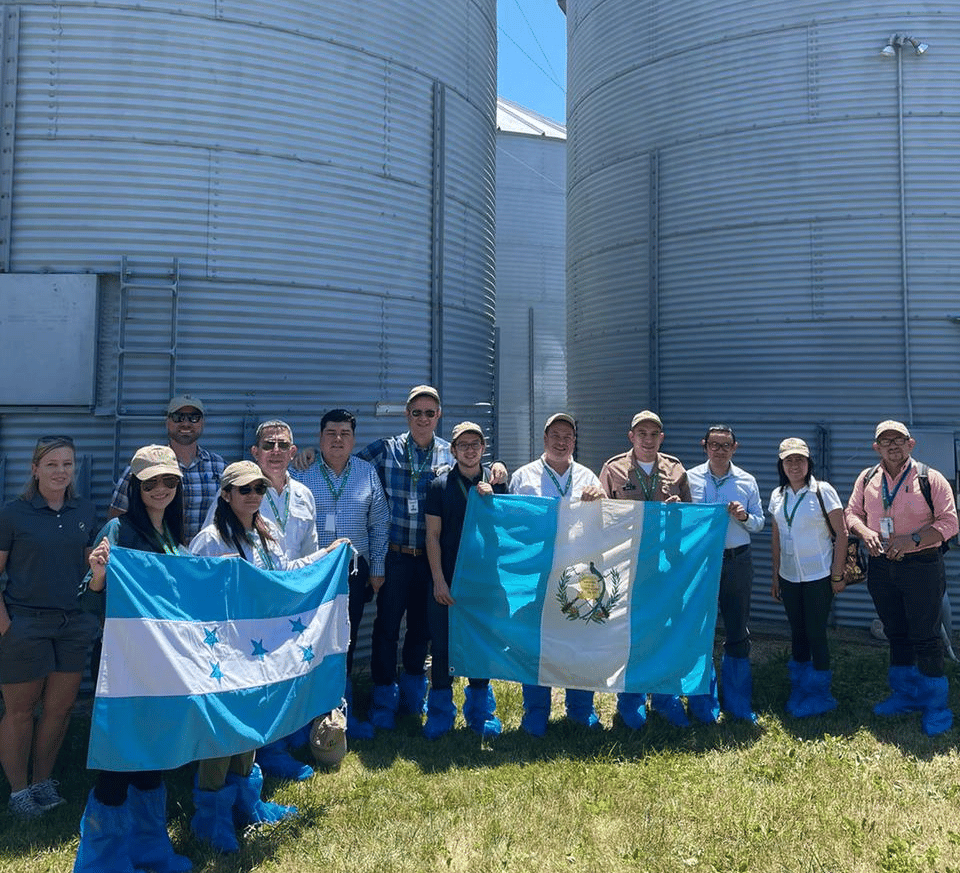Local and regional regulations imposed by controlling and sanitary authorities can sometimes put a damper on exports. But taking a step back and being transparent about the U.S. trading system can often alleviate misunderstandings and help keep grains flowing into markets.
Take, for instance, Guatemala and Honduras. The U.S. Grains Council (USGC) recently hosted a team of government representatives from the two countries responsible for regulating grain imports with the goal of improving their understanding of the U.S. export value chain. The team spent time in Illinois and Louisiana, seeing the export system in its entirety.
“Knowing how the U.S. export value chain works is relevant for people directly involved in the importing process of feed grains, such as buyers and end-users, because it gives them a better understanding of what they should expect when buying from the U.S. in terms of logistics and controls at the origin,” said Ana Ballesteros, USGC marketing director for Latin America. “That same understanding is equally relevant for those regulating imports at the destination countries. For representatives of the controlling authorities, seeing how things are done in the U.S. gives them tools to make decisions and define or modify regulations by considering the practices in the U.S. This knowledge usually ends up in facilitating trade.”
The team began in Illinois, visiting Illinois Corn before stopping by a local grain inspection office. There, the team learned more about handling, analyzing and grading corn samples using Federal Grains Inspection Service (FGIS) standards and procedures. Then, they moved to a corn farm and country elevator, where they learned about the production, storage and movement of corn in this initial stage of the export process.
During a visit with the Illinois Bureau of Weights and Measures, the group saw a grain moisture lab and a weight lab to better understand equipment certification and fair transactions for the state’s farmers. The final stop in the state was at a river barge terminal, where the team discovered how these terminals handle grain as it heads south to New Orleans for export overseas.
“Seeing how the process begins, including visiting a corn farm, may seem like going too far back on the system. However, it is also showing how, regardless of the final destination of corn, the system is consistent. As one of our participants said following our final presentation, it may all begin with only a corn kernel, but an entire system has been built for it to feed the world,” Ballesteros said.
The trade mission continued in New Orleans later in the week, where the group saw live operations at the land-based and floating export elevators and bulk vessel and barge convoys transiting the river. Additionally, the team visited the New Orleans FGIS field office, this time learning about FGIS’s role in moving grain from the United States to overseas destinations.
The group also had the opportunity to observe three private laboratories to better understand the services and technology used by independent surveyors in the U.S. export industry. They then received a comprehensive presentation on the export system as a whole to wrap-up the week of on-the-ground learning.
“The government officials were very engaged during our visits and asked many questions of our hosts. They expressed their gratitude for having the opportunity to learn and shared their admiration for how the U.S. system works, for its transparency and for the processes in place to guarantee a fair trade. We expect this experience will continue facilitating trade between the U.S. and these countries and, finally, help importers by supporting education,” Ballesteros said.
The Council will continue to work closely with its industry allies in Guatemala and Honduras, and other countries in the Latin American region, to identify practices that may be enhanced through a better understanding of the U.S. feed grains supply system.
About The U.S. Grains Council
The U.S. Grains Council develops export markets for U.S. barley, corn, sorghum and related products including distiller’s dried grains with solubles (DDGS) and ethanol. With full-time presence in 28 locations, the Council operates programs in more than 50 countries and the European Union. The Council believes exports are vital to global economic development and to U.S. agriculture’s profitability. Detailed information about the Council and its programs is online at www.grains.org.

